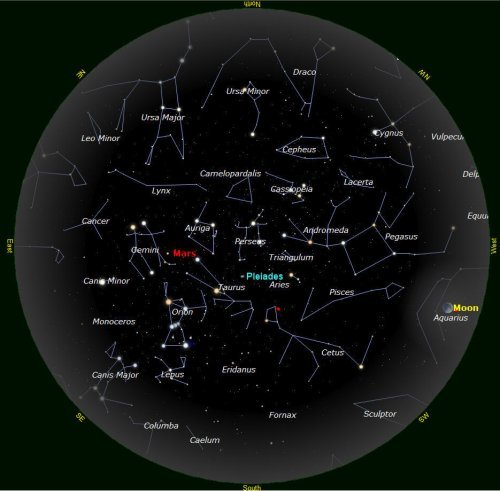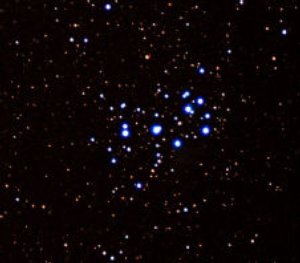
LAKE COUNTY – The planet Mars moves close to the Earth every two years. This is a function of its orbit around the sun.
“Close” is still pretty far away – about 55 million miles! When Mars is close, it provides an interesting object for telescope viewing.
This month, Mars will be close, and can be seen in the area of the sky shown in the December star chart. It will look like a bright star with a reddish hue.
Through a telescope, it is possible to see one of the polar caps and some dark markings on the planet’s surface. Here’s a picture of Mars I took through one of my telescopes when it was close in 2003.

In December, there are some very beautiful constellations overhead.
There is Perseus, the hero in Greek mythology we spoke of last month. That’s the constellation where comet Holmes appeared. Below Perseus is Taurus the bull. The brightest star in Taurus, Aldebaran, is reddish in color, and is sometimes called the “eye of the bull.”
Between Perseus and Taurus is the Pleiades, a small group of bright stars you can see with the naked eye. The Pleiades is sometimes called the “seven sisters.” An image of the Pleiades is shown below.

Finally, below Taurus, rising in the southeast is Orion, one of the most beautiful of all constellations. Orion was a great hunter in Greek mythology. We’ll talk more about Orion in next month’s column.
For more information about astronomy and local astronomy-related events, visit the Taylor Observatory website at www.taylorobservatory.org.
On Dec. 15, starting at 8 p.m., the observatory will be open to the public, and Mars will be featured, both in a presentation and in telescope viewing.
John Zimmerman has been an amateur astronomer for 50 years. He is a member of the Taylor Observatory staff, where, among his many duties, he helps create planetarium shows.
{mos_sb_discuss:2}